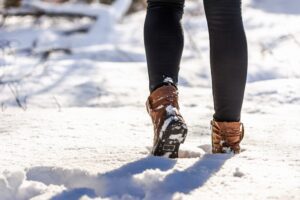Varicose Veins and Swelling: What You Need to Know for Healthy Legs
Do you ever notice swelling in your legs after a long day of standing or walking? If so, you should know that this may be a sign of venous disease. We will discuss what causes swelling in your legs and how you can prevent it. We will also look at why varicose veins are related to leg swelling and what treatments are available.
What Causes Swelling in the Legs?
There are many different causes of swelling in the legs, including:
- Chronic venous insufficiency
- A build-up of fluid in the tissues (called edema)
- Standing or sitting for long periods of time
- Side effects from certain medications
- Pregnancy
- Obesity
If you are experiencing leg swelling, it is important to talk to your doctor so they can determine the underlying cause and recommend treatment options. In some cases, leg swelling may be a sign of a more serious condition, such as heart failure or blood clots, so it should not be ignored.
How Can Varicose Veins Related to Swelling In the Legs?
Veins return blood from the legs up towards the torso and have valves to prevent blood from flowing back down towards gravity. When these valves become damaged, blood can accumulate in the legs, which we see as swelling. This phenomenon is called Chronic Venous Insufficiency. In some cases, the malfunctioning valves occur in the veins just below the skin surface, and the blood build-up causes these superficial veins to become enlarged and tortuous. We commonly call this Varicose Veins.
Diagnosis and Treatment of Chronic Venous Insufficiency
If you experience regular swelling in your legs, the first step is to see your doctor to determine the cause. Your doctor will ask about your medical history and symptoms and examine your legs. They may also order one or more tests to check for circulatory problems. The best way to identify chronic venous insufficiency is a specialized ultrasound exam.
If you are diagnosed with chronic venous insufficiency, your doctor will discuss treatment options with you. Treatment choices include lifestyle changes, such as wearing compression stockings and elevating your legs when sitting or lying down, medications, and weight control. In some cases, a combination of treatments may be recommended.
Ways to Prevent and Reduce Leg Swelling
There are many ways to prevent and reduce leg swelling. Here are some tips:
- Exercise: Exercise is one of the best ways to prevent and reduce leg swelling. The muscles in the legs help pump blood out the veins, decreasing the fluid accumulation. Walking, running, and biking are all great exercises for healthy legs.
- Elevate your legs: When you are sitting or lying down, elevate your legs above your heart to help reduce swelling.
- Wear compression stockings: Compression stockings help to prevent damaged veins from become enlarged and reduce fluid build-up under the skin.
- Avoid standing or sitting for long periods: If you must stand or sit for long periods, take breaks often to move around and stretch your legs.
- Watch your diet: Avoid eating foods that are high in salt as this can cause fluid retention and worsen the swelling associated with varicose veins.
Next Step: Consult with Vanishing Veins Northwest
At Vanishing Veins Northwest in Renton, we specialize in patients with leg swelling, and can diagnose chronic venous insufficiency and varicose veins. We will help you understand the symptoms and if treatments are right for you!
Find out what you can do to keep those legs healthy!
